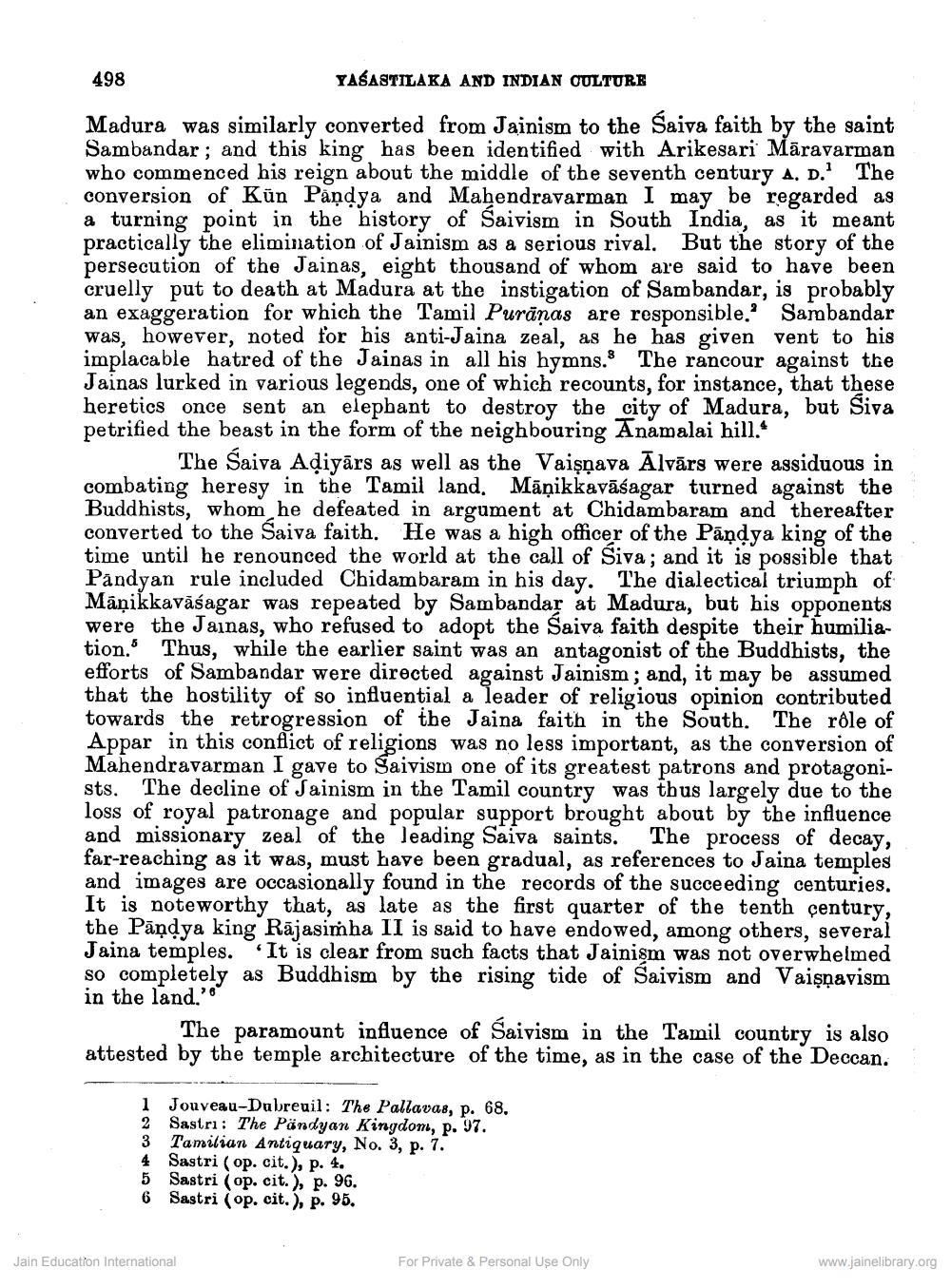________________
498
YASASTILAKA AND INDIAN CULTURE
which recounts, for instour against the
nan elephant to
Madura was similarly converted from Jainism to the Saiva faith by the saint Sambandar; and this king has been identified with Arikesari Māravarman who commenced his reign about the middle of the seventh century A. D.' The conversion of Kün Pandya and Mahendravarman I may be regarded as a turning point in the history of Saivism in South India, as it meant practically the elimination of Jainism as a serious rival. But the story of the persecution of the Jainas, eight thousand of whom are said to have been cruelly put to death at Madura at the instigation of Sambandar, is probably an exaggeration for which the Tamil Purānas are responsible, Sambandar was, however, noted for his anti-Jaina zeal, as he has given vent to his implacable hatred of the Jainas in all his hymns. The rancour against the Jainas lurked in various legends, one of which recounts, for instance, that these heretics once sent an elephant to destroy the city of Madura, but Siva petrified the beast in the form of the neighbouring Anamalai hill."
The Saiva Adiyārs as well as the Vaisnava Ālvārs were assiduous in combating heresy in the Tamil land. Māņikkavāśagar turned against the Buddhists, whom he defeated in argument at Chidambaram and thereafter converted to the Saiva faith. He was a high officer of the Pandya king of the time until he renounced the world at the call of Siva; and it is possible that Pandyan rule included Chidambaram in his day. The dialectical triumph of Māņikkavāśagar was repeated by Sambandar at Madura, but his opponents were the Jainas, who refused to adopt the Saiva faith despite their humiliation. Thus, while the earlier saint was an antagonist of the Buddhists, the efforts of Sambandar were directed against Jainism; and, it may be assumed that the hostility of so influential a leader of religious opinion contributed towards the retrogression of the Jaina faith in the South. The role of Appar in this conflict of religions was no less important, as the conversion of Mahendravarman I gave to Saivism one of its greatest patrons and protagonists. The decline of Jainism in the Tamil country was thus largely due to the loss of royal patronage and popular support brought about by the influence and missionary zeal of the leading Saiva saints. The process of decay, far-reaching as it was, must have been gradual, as references to Jaina temples and images are occasionally found in the records of the succeeding centuries. It is noteworthy that, as late as the first quarter of the tenth century, the Pāņd ya king Rājasimha II is said to have endowed, among others, several Jaina temples. It is clear from such facts that Jainism was not overwhelmed so completely as Buddhism by the rising tide of Saivism and Vaişņavism in the land.'"
The paramount influence of Saivism in the Tamil country is also attested by the temple architecture of the time, as in the case of the Deccan.
1 Jouveau-Dubreuil: The Pallavas, p. 68. 2 Sastri : The Pandyan Kingdom, p. 97. 3 Tamilian Antiquary, No. 3, p. 7. 4 Sastri (op. cit.), p. 4. 5 Sastri (op. cit.), p. 96. 6 Sastri (op. cit.), p. 95.
Jain Education International
For Private & Personal Use Only
www.jainelibrary.org




